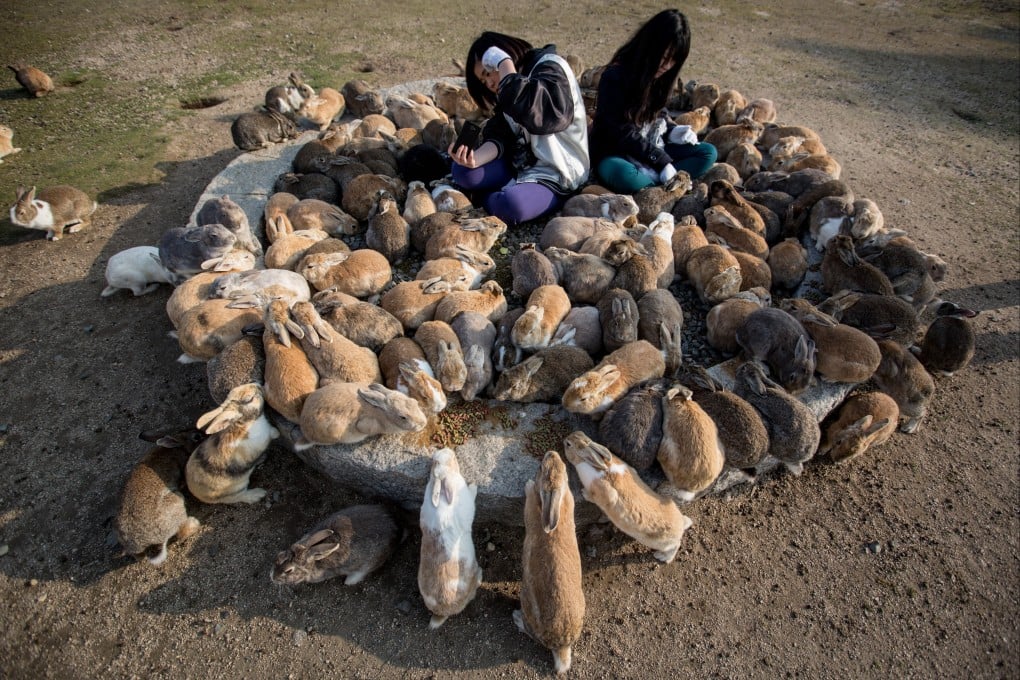Japan’s ‘Rabbit Island’ bunnies attacked by ‘jungle crows’ as tourism invites predators
- Tourists coming to feed the Island’s bunnies are bringing too much food, and the leftovers are attracting other, more aggressive varieties of wildlife
- The island has seen a surge in the number of rats, aggressive crows and even wild boar, which are able to swim ashore from other nearby islands

But the population is now vulnerable to predators drawn to the food brought by such travellers. Despite warnings by city administrators and signs posted around the island, visitors are giving the rabbits the wrong sort of food to eat, such as lettuce and carrots, which is making some of them weak and unwell.
An official of the local authority stationed on the island said: “We feed them pelleted food, grass and vegetables, but it can be dangerous if they eat other things.”

Worse still, the abundance of food brought by tourists is leading to leftovers that attract other, more aggressive varieties of wildlife.
The official, who declined to be named, admitted there was a growing problem of other species rivalling the rabbits for their food.
The island, officially known as Okunoshima, has seen a surge in the number of rats, aggressive crows and even wild boar, which are able to swim ashore from other nearby islands in the Inland Sea.
Some of these large, predatory creatures have turned on the rabbit population, the Yomiuri newspaper reported, quoting one person as saying they had seen crows attacking rabbits as they fought over food and even killing rabbits that appeared weak or ill.
These crows would have no problemin killing a weak or young rabbit, and I’d suggest they would be able to swallow a newborn rabbit whole